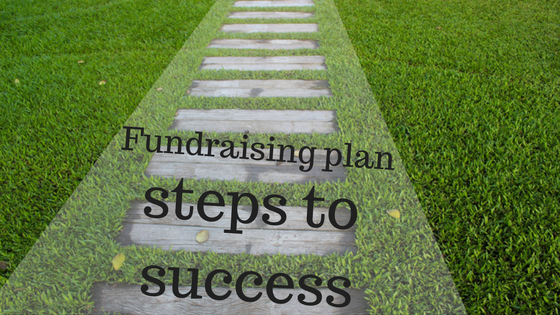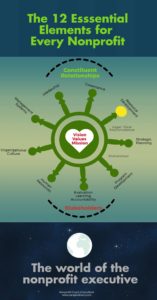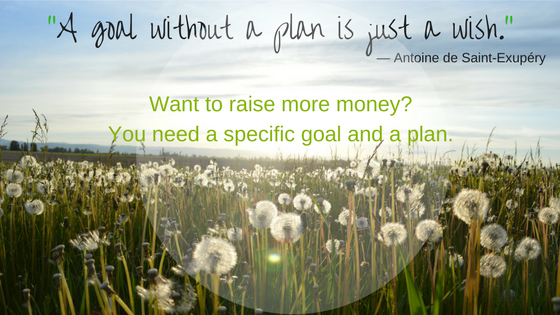
This is the second part of a posting on fundraising plan steps to success. Go back and read part one so you can understand the income reliability buckets referenced below.
Now, if you’re ready to start thinking about your fundraising plan steps, here is how to get started:
Figure out what areas of your funding pie chart you want to grow.
Individual giving:
First of all, be reasonable. If you’re only raising $10,000 in individual giving, don’t set an unrealistic goal for what you can achieve in one year. Be creative, but put it in historical context. Donor acquisition is challenging. So, begin by looking at your current donors and developing a list of key attributes that will help you think through where to reach people who might also have those attributes. Please don’t read the list of attendees of a major fundraiser event by another charity and assue they will care about your mission. Your fundraising plan steps should include spending some time looking at lapsed donors – and considering why they have lapsed. Review your donor data for the last three years:
- Revenue by category (annual fund, major donors, corporate contributions, corporate sponsorships, grants,memberships, events, planned giving, etc.). Then, figure out your numbers so you know your trends:
- Total number of donors for each year
- Calculate the number of new donors from previous year (this is important – what’s the plan to keep them?)
- Review the number of donors that lapsed from the previous year
- Total revenue from online giving for each year
- Your fundraising plan steps should also include ways to interact with donors through your thank you letters and notes, online stories, newsletters, annual reports and more (see communication below).
Grants
Hopeing to win a grant is not a planned approach. You are probably already writing grants, but planning this part of your plan will make it more strategic. Some steps to consider:
- Create a prioritized project list that you are seeking funding for.
- Target prospect research to those projects. Make sure the match between your program and funder is a good one. Don’t waste time with a scattershot approach to funders.
- Quality writing. Less is more in making your case. Answer the questions succinctly. Get a fresh eye to read it.
- Develop a relationship with your funders. Let them see you as their partner in solving the community needs.
- Plan out your year with grant deadlines and report deadlines for the funders you will be approaching.
- Prepare ahead with organizational documents that most funders require like organizational and project budgets, plans for evaluation, board lists, etc.
- Gather data related to the need you are addressing, and data on what other nonprofits are doing and what is unique about your methodology. If collaboration makes sense, begin that process in advance, and get an MOU in place or letters of support.
- Strategize your evaluation methodology, and ask for funding to implement it.
- Lastly, think though how you will sustain the project after the end of the grant funding.
Fee-for-service:
If you want to look at fee-for-service, you need a business plan. Consider what you have to offer and who might be willing to pay. Best if the service ties to your mission to avoid paying taxes. You may need support in conducting a market analysis to decide how much to charge at the nonprofit level (IRS rules). You might start with suggested donations, a sliding scale, or membership fees. Make sure you know what your break-even point is. Determine roles and responsibilities, and what human and other resources you need.
Corporate Charitable Contributions (not sponsorships):
Why not sponsorships? It’s a low-level income reliability factor. Corporations are interested in building their brand and making sales. It’s marketing dollars, and most small-to-mid-sized nonprofits can’t deliver a big enough audience. But there are ways to engage corporations in giving, and you can research and make a plan:
- Most corporations have employee matching programs, and volunteer matching programs. Do you remind your donors or volunteers regularly about matching gifts? Also, do you have board members who work at corporations with matching policies?
- Corporate contributions are also more likely if they have selected ways in which they want to invest in solving community problems, or building community. Before asking, research their corporate giving page to see what their guidelines say.
- Get employees involved with your organization’s activities in a meaningful way.
Fundraising plan steps also include these essential tactics:

Write your case statement.
What’s a case statement? It’s your opportunity to sell hope. What donors really want to see is hope and how you’re making the world a better place.
It’s probably not the one you have been using in your grants. Definitely not the one you’ve been using to please an internal audience of board members, or anyone else in a position to approve since they are NOT your target audience. Your target audience is your donor. In other words, it’s written as a story about how your donors are changing the lives of your clients through you. Your work is secondary.
Your case answers the questions “Why should I give you money? What will happen to those in need if I do?” Will it make a difference?
It’s full of the stories that feed your fundraising communications. Bring everyone in the organization into the idea of capturing your best stories.
Create good internal systems
You will need processes for soliciting gifts, managing gifts when they arrive, thanking people, and tracking relationships. Donors need to be thanked multiple times and in multiple ways before they are asked for a second gift. Your systems should include ways to do that.
Please invest in a good fundraising database system, there are many good ones out there now that don’t cost a fortune. You want a system that can grow with you, and allows you to save important information about your donors as you get to know them better.
Begin to create a workflow chart so everyone understands what needs to be done, when and who will do it. Fundraising plan steps include on on building accountability into your structure. How long does it take you to thank your donor, and how do you do it?
Communicate more often and in a way that appeals to donors
Donor engagement can and should happen in multiple ways. But it’s not just you talking at (or writing at) your donors. Consider ways you can listen too. Get out and talk to donors, or consider a donor survey of current donors on how they want to communicated with.
- Donor communications is a system of communication, not just “a newsletter when you can get to it” or an email appeal.
- Remember your case for support? Are you focusing on stories of donors and how they are making a difference in the lives of the people you serve? How are you using them in a strategic way?
- Fundraising plan steps include budgeting for freelancers to help you build out content for your social media calendar, or e-newsletters. And, when was the last time you updated your website?
- Face-to-face is most effective in building relationships with donors, and sharing successes. How about a cultivation-only event like a house party that’s more intimate to get to know them?
- Your focus on relationship building will help donors become part of your team. Show them how they can help you create a new future, invite them to share their thoughts.
- Donor communications include how you ask for their investment in the work. Please don’t say “Dear Friend” in an appeal. Take the time to set up your appeal to include the right salutation. You can learn more about donor-centered communications here.
- Have you called your donors just to say “thanks?” This is an easy way for board members to build relationships with donors.
- Make a plan for meeting with people who might be interested. Fundraising plan steps include individualized strategies for cultivation. Treat them as human beings, not checkbooks. Identify your most passionate donors and spend more time with them.
There is so much more to building a fundraising plan. You don’t want donors to give once and go away. You need a program that grows and succeeds each year because it’s well-planned, and sufficiently-resourced (Board, staff, volunteers).
If you need help, let’s talk!





